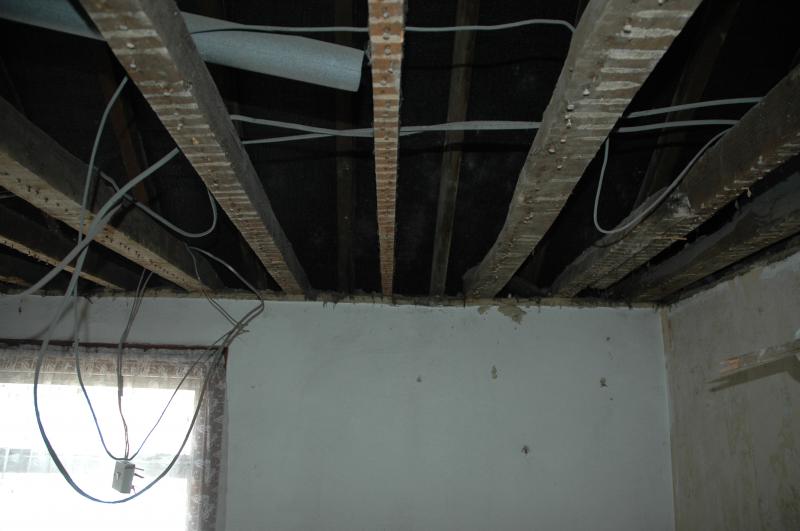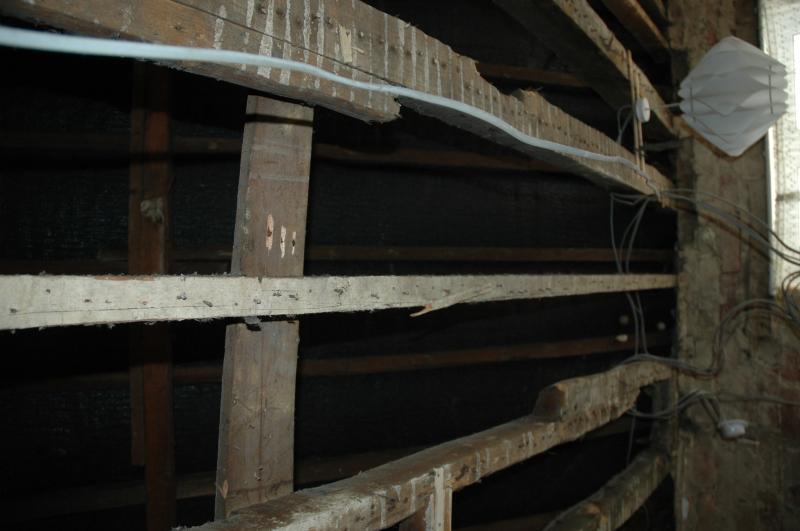Hi All,
I am hoping for some advice. I am in the middle of renovating a Victorian terraced house and decided to remove the first floor ceilings as I thought the lath and plaster ceiling was sagging badly.
Once I had removed the lath and plaster (nice job - NOT!) it became clear that it was the joists that were sagging and not the plaster dropping.
Ideally I would like to replace these joists with new 6 x 2 timber but I am a little confused. The joists are not attached to the rafters but to the wall plates. it looks like they are nailed downwards into the wall plate. (In a modern roof the joists attach to the rafters to stop them 'pulling the walls apart' - well that was my understanding?).
The roof does have purlins front and back but whilst these take some of the weight I can't see how they stop the 'spreading' load.
My question is therefore can I (and how do I) change these for modern timber safely?
I have put some pictures up for explanation but am not sure I have got it right yet!
Thanks
Lee.
I am hoping for some advice. I am in the middle of renovating a Victorian terraced house and decided to remove the first floor ceilings as I thought the lath and plaster ceiling was sagging badly.
Once I had removed the lath and plaster (nice job - NOT!) it became clear that it was the joists that were sagging and not the plaster dropping.
Ideally I would like to replace these joists with new 6 x 2 timber but I am a little confused. The joists are not attached to the rafters but to the wall plates. it looks like they are nailed downwards into the wall plate. (In a modern roof the joists attach to the rafters to stop them 'pulling the walls apart' - well that was my understanding?).
The roof does have purlins front and back but whilst these take some of the weight I can't see how they stop the 'spreading' load.
My question is therefore can I (and how do I) change these for modern timber safely?
I have put some pictures up for explanation but am not sure I have got it right yet!
Thanks
Lee.




